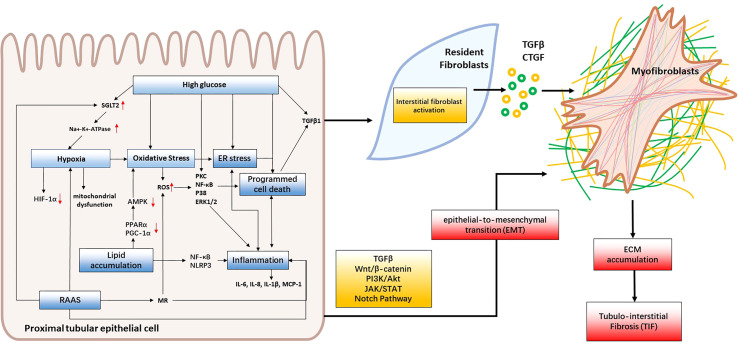Figure 2.
Mechanisms of renal tubular injury in DKD. Hyperglycemia, lipid accumulation and RAAS activation lead to oxidative stress, hypoxia, and ER stress, consequently triggering inflammation, programmed cell death and EMT. These cascading effects contribute to renal tubular cell injury and interstitial fibroblast activation. When intrinsic renal cells become activated, they secrete cytokines like TGF-β and CTGF that facilitate the formation of myofibroblasts which contribute to fibrosis by producing collagen I, collagen III, collagen IV, fibronectin, and laminin. This leads to the accumulation of extracellular matrix (ECM) and, ultimately, the development of tubulointerstitial fibrosis and DKD.

